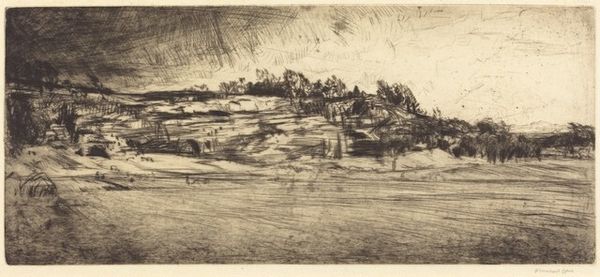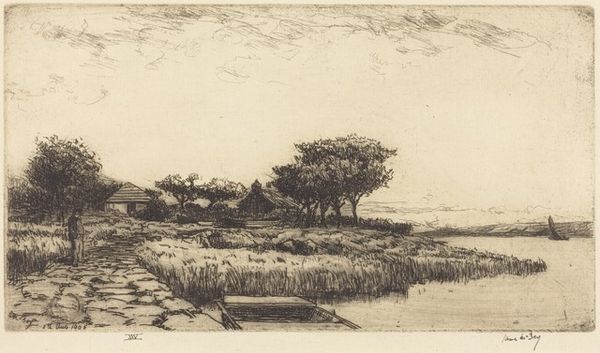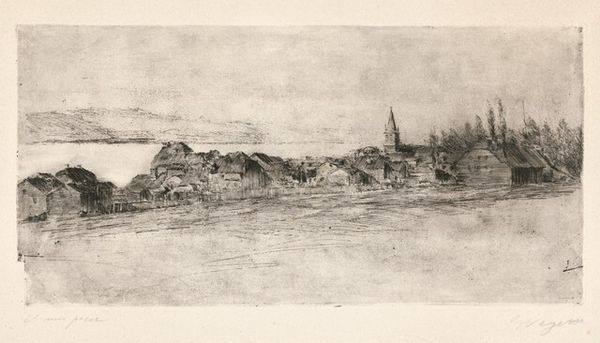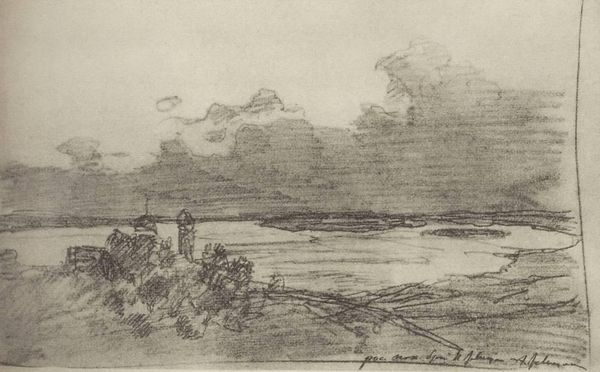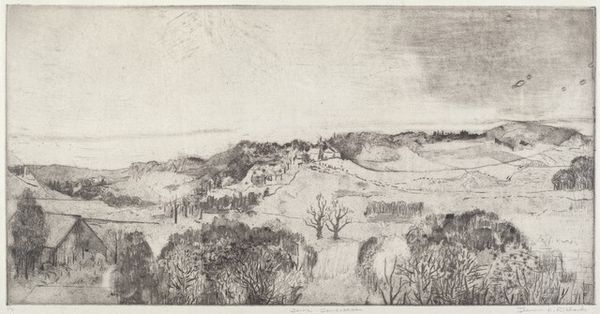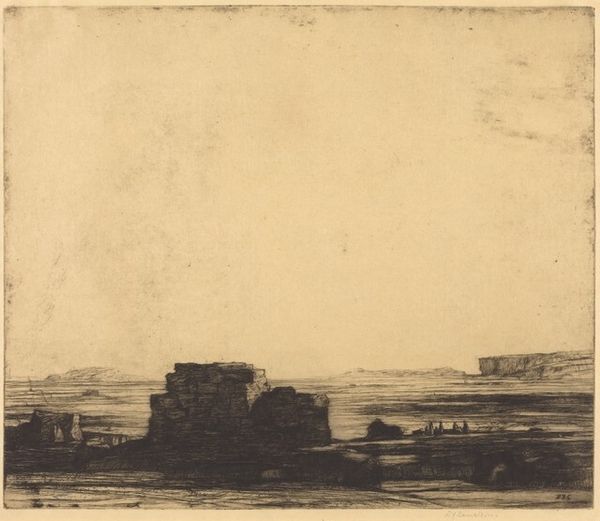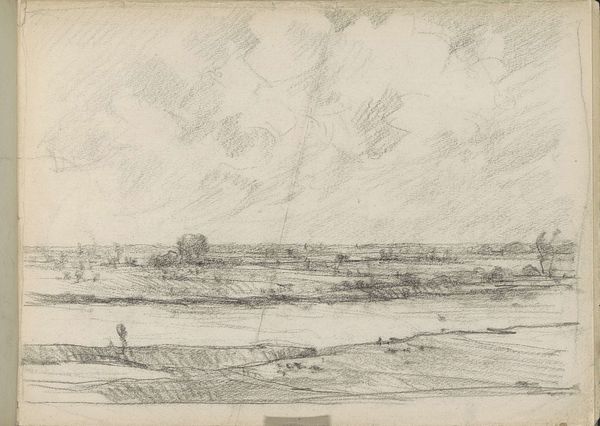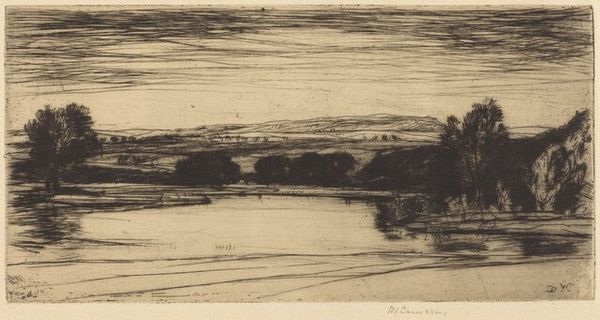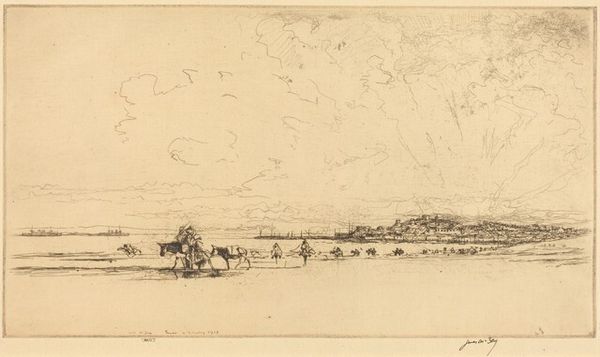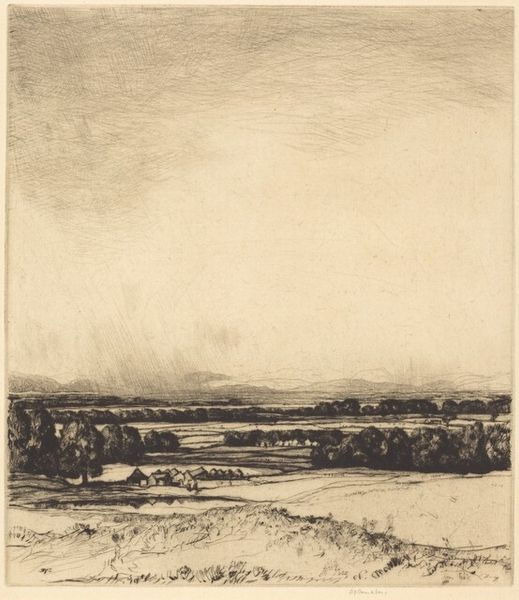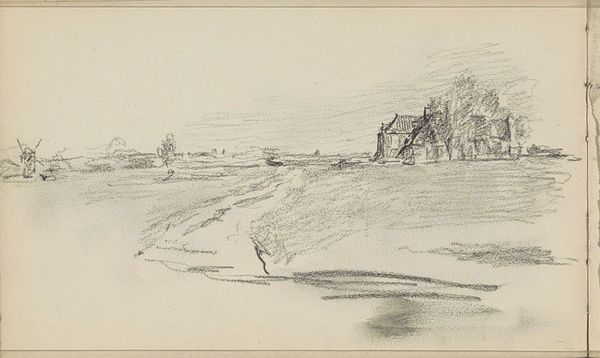
drawing, print, etching
#
drawing
#
ink drawing
# print
#
etching
#
landscape
#
realism
Copyright: National Gallery of Art: CC0 1.0
Curator: This etching, "Castle Urquhart" by David Young Cameron, was created in 1929. It exemplifies his mastery of the medium, don't you think? What strikes you first? Editor: Immediately, the somber mood, which suggests a meditation on ruination and historical burden. The etching appears quite stark and austere with a focus on dark and muted tones that underscores the heaviness of time itself. Curator: Cameron was indeed drawn to historical sites, reflecting an interest in Scotland's heritage, one can't help but consider how that past has been made so palatable and commodified within tourist economies and nationalist movements. Notice how the precise and delicate etched lines build texture and define form, creating a tangible sense of material history. Editor: The artist chose to depict the castle as part of a broader landscape, emphasizing its relationship to the surrounding area, almost an interweaving of humanity's footprint with nature. We can view it as a symbol for historical power structures, but the focus on ruination prompts reflections on those structures' inevitable decline and fallibility. The castle, despite its formidable appearance, appears almost to succumb to erosion. Curator: Exactly. We see evidence of wear. Let's talk about Cameron's technique, his etching process involved the careful application of acid to a metal plate, manipulating light and shadow to produce a sense of depth. Etchings were not luxury items; their comparative low-cost printing placed them within reach of a far broader population compared to, say, oil paintings. Editor: That connects interestingly with a critique of romanticized notions of Scotland's history. Cameron's artistic labor, and the accessibly-priced product of his labor, allow us to consider its dissemination among a broad audience, whose perceptions the work shapes, yet whose narratives of history are very rarely accounted for. Curator: Yes, "Castle Urquhart" invites multiple layers of consideration, blending a concern for technique and artistry with the power that such representations of Scottish iconography carry. Editor: Indeed. By paying attention to the intersection of technique, history, and accessibility, one discovers not just the artwork, but also the interwoven complexities of national identity, its commodification, and enduring legacy.
Comments
No comments
Be the first to comment and join the conversation on the ultimate creative platform.
